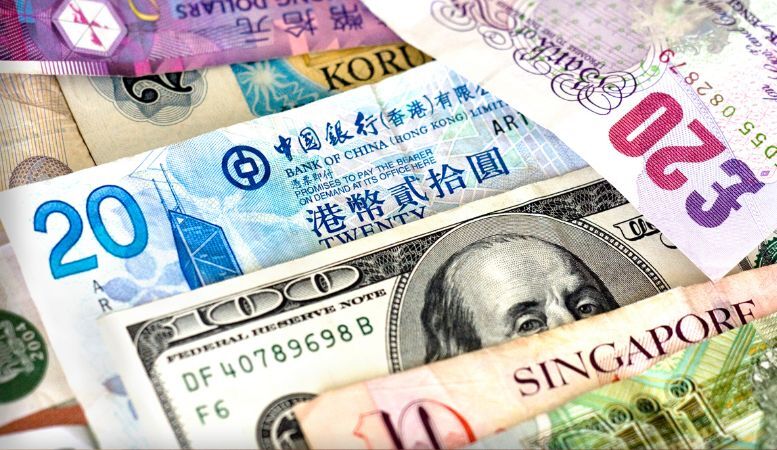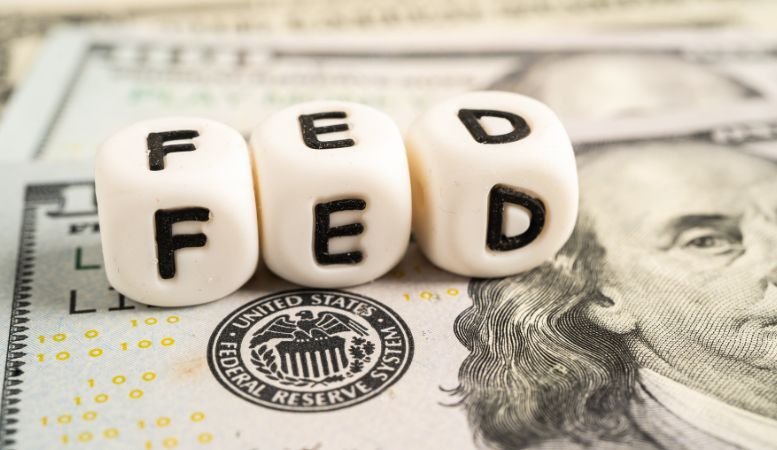Table of Contents
While we’ve seen numerous technological and economic advancements over the last century, one thing remains the same: countries need a reliable economic system. The global economy used to rely on gold-backed money, but the shift from the “gold standard” to fiat money now dominates a large portion of the world. Here in the United States, this has changed how the government and consumers control and use money.
Despite this change, some still argue for the benefits of gold-backed currency or the gold standard. The fiat vs. gold standard debate has a lot of history and factors to consider, but the team at Oxford Gold Group is here to break it down for you.
Understanding Fiat Currency and Gold Standard

Historically, people have always placed value on precious metals like gold. Today, we use gold as an investment, such as in a gold IRA. However, gold used to be the backbone of our currency system, which was called the gold standard. Now, we use a modern paper- and coin-based fiat currency system.
What Is Fiat Currency?
Fiat money relies on the government to give it value. There is mutual trust and agreement among a group that something like a paper dollar represents value in their shared economy. “Fiat” is a Latin word for “let it be done.”
Unlike gold, paper is not an inherently valuable material, but the United States dollar has value because the government and its people give it value.
Other examples of fiat currency include:
- European euro (EUR)
- Japanese yen (JPY)
- Swiss franc (CHF)
- Canadian dollar (CAD)
Each of these currencies is state-issued money that governments, institutions, and individuals declare as legal tender. Items and materials that are otherwise valueless represent the currencies in the medium of exchange. Further, the currencies are not backed by physical commodities of value, such as precious metals.
Several factors influence the value of fiat currency, including:
- Investment potential
- Political and economic stability
- Economic performance
- Geopolitics
- Global inflation
This means that politically unstable countries that rely on fiat money have a less valuable currency. This can make international trade difficult.
What Is the Gold Standard?
The gold standard is an international standard that links a currency’s value to a physical commodity, like gold. This allows for easier international trading practices. In this system, each country sets its own price of gold and then purchases and sells gold at that price. This influences the value of the country’s currency.
For example, if a country on the gold standard decided gold was worth $100 an ounce, every dollar would represent 1/100th of an ounce.
This gold-backed system was generally reliable and stable, as people could easily convert their money into gold — and vice versa. This was the primary currency system in the United States from the 1870s to the early 1920s, then again in the late 1920s to 1932. Other countries had strong gold standard systems as well, including the gold specie standard from the United Kingdom.
Other relevant standards include the gold bullion standard and the gold exchange standard. The gold bullion standard allowed people to exchange an amount of gold for money at a fixed price during the 19th century. The gold exchange standard, on the other hand, functioned under the Bretton Woods Agreement, which allowed countries to fix their currency to another country’s currency with a gold standard.
How Fiat and Gold Systems Began

Gold has been historically valuable since the beginning of trade. While practical metals like copper, iron, or bronze found their value in the manufacturing of tools and weapons, gold was a decorative metal. Since it was scarce, it became valuable.
People melted gold into coins to quantify its value. However, paper money became a popular alternative to physical gold in the 16th century in the West. These two mediums made trade difficult, so the gold standard was a solution to reconcile the conflicting trade methods.
In the 1700s, right after the War of Independence, the United States adopted the first iteration of the gold standard. Since the U.S. had primarily used foreign coins, it wanted to establish its currency as backed by gold and silver. The U.S. Mint began officially producing gold and silver coins after the Coinage Act of 1792.
However, silver declined in value, which led to an overproduction of silver coinage and a lack of circulation of gold coins. This caused most people to utilize gold solely for international trade while using silver for domestic trade.
A combination of the Coinage Act of 1864 and the gold rushes that took place in Canada and Australia at that time increased the supply of gold and its circulation, which drove out silver entirely. This shifted the United States back into a gold-backed currency. In 1933, the government passed the Emergency Banking Act, preventing citizens from exchanging currency for government gold.
In 1971, the United States stopped using gold in international exchanges as well, ending the gold standard system completely.
As for fiat currency, the first instance dates back to 12th century China. However, the United States didn’t start using paper money until the 18th century. The government began issuing banknotes for those who didn’t want to carry gold and silver, but as each bank created its own notes, it became impossible to have a universal paper currency.
In 1861, the government created greenbacks, which were banknotes that were not initially exchangeable for gold or silver, so this may be the first instance of fiat currency in the U.S. However, the government later allowed citizens to exchange greenbacks for gold and silver.
The Emergency Banking Act of 1933 established the fiat currency system, and the United States has solely relied on it since 1971 for domestic and international trade. Today, the government backs the U.S. dollar with full faith and credit.
Flexibility in Supply: Fiat Currency vs. Gold Standard
Fiat currency has much more flexibility in supply than a gold standard system. Since a gold standard system relies on the value of gold, it relies on the supply of gold. Since gold is a fixed resource (there is only a certain amount of gold on Earth), this doesn’t allow for much flexibility.
With fiat currency, central banks have greater control over the supply. This allows them to manage:
- Interest rates
- Credit supply
- Money velocity
- Liquidity
Advantages: Fiat Currency vs. Gold Standard

Now that you know how each currency functions, you might wonder about the benefits of each. Both systems have their own advantages. When you consider fiat vs. gold standard currency, you must understand what each different system offers.
Fiat Currency Advantages
Fiat currency has numerous advantages, which is why many modern currency systems are fiat currencies. One of the major advantages is that fiat currency allows for adaptability to economic growth. Gold supply can be unpredictable, but fiat currency has fewer external factors impacting its growth.
Similarly, it allows for more flexibility in monetary policy. Since the government and central banks have more control over economic conditions, they can use strategies to stabilize the economy. This is why fiat currency is more effective than the gold standard during economic crises like recessions.
Another advantage of fiat currency is that it is more cost-effective to produce. Producing paper money backed by gold, or gold and silver coins, can come at a high cost. Since fiat currency is more cost-effective, this again allows the government more flexibility and more room for economic growth.
Gold Standard Advantages
The gold standard currency system has its advantages, too. After all, countries have used some form of it for centuries. Even today, although the U.S. currency doesn’t rely on gold, investors still use it as a financial investment.
A major advantage of the gold standard is its protection against hyperinflation. With a gold-backed system, currency’s value remains stable as long as the global supply is stable. This is because, under a gold standard system, governments can only mint money if they have a corresponding amount of gold in reserve. This prevents them from producing a large influx of currency and, consequently, prevents hyperinflation.
In terms of global trade, the gold standard provides stabilization of fluctuations. With fiat currency, there are rapid fluctuations in exchange rates. With a universal gold standard system, there wouldn’t be drastic fluctuations, making international trade easier.
Finally, the gold standard has the advantage of convertibility. While you can still buy and sell gold under a fiat currency system, there is no fixed price for exchanging money for gold. Being able to convert paper money into gold, or vice versa, is more convenient for citizens, especially during times of economic uncertainty.
Challenges: Fiat Currency vs. Gold Standard
As with any economic system, fiat currency and the gold standard also have their challenges. These are equally as important as advantages when considering fiat currency vs. the gold standard.
Fiat Currency Challenges
The government has more control over the economy with fiat currency, which can be beneficial, but not when the government is unstable. With government instability comes economic instability.
This fact also makes fiat currency vulnerable to hyperinflation. If the government pumps out an influx of currency, the value of the dollar decreases. Additionally, without the backing of gold, fiat currency isn’t easily convertible to any commodity.
Gold Standard Challenges
Since the government has less control over the economy under a gold standard system, they have less power in economic downturns. There is also a greater risk of economic deflation with the gold standard if economic growth surpasses gold availability. Deflation leads to decreased prices for items, which leads to less consumer spending and a weaker economic system.
The Downfall of the Gold Standard

In the early 20th century, countries began to see the vulnerability of the gold standard system. World War I led to shifts in political alliances and monetary politics. As governments and citizens began to distrust the gold standard system, panic ensued. President Franklin D. Roosevelt began deconstructing the gold standard system with the Emergency Banking Act of 1933, which prevented private citizens from owning gold.
Switching From the Gold Standard to Fiat Currency
The United States moved away from the gold standard in favor of fiat currency in 1971. Since gold no longer secured the value of currency under this model, countries tied the value of their currency to the U.S. dollar. Since then, many countries have operated using fiat currency.
Some still advocate for the return of the gold standard system, arguing for the inherent stability of the system. However, as covered above, each system has its drawbacks and benefits. There is no inherently better system, as it largely depends on the current political and economic climate.
The Role of Gold Today
Although the United States’ currency system no longer relies on gold, it is still a popular investment tool for many. Gold and silver continue to be popular alternatives to fiat money. Using these precious metals to diversify your investment portfolio can provide a hedge against inflation. It is also known as a safe haven investment, meaning it may act as financial protection during economic uncertainty.
There are various ways to safely buy gold for investment today, including:
- Coins
- Bullion bars
- Jewelry
- Gold IRAs
- Mining stocks
Find gold coins and bullion bars here at the Oxford Gold Group.
Just because gold doesn’t back the U.S. dollar anymore doesn’t mean the value of U.S. currency doesn’t influence the price of gold. Since we price gold by dollars, a strong dollar will cause an increase in the price of gold, while a dollar with a depleting value will lead to a decrease in the price of gold.
Oxford Gold Group: Your Trusted Source for Gold Investments

Looking at fiat vs. gold standard economic systems, you understand that any system has its benefits and drawbacks. One way to combat the unpredictability of currency systems is to have a diverse investment portfolio. Here at Oxford Gold Group, we help our clients build strong portfolios for a strong financial future.
Contact us today at 833-600-GOLD, or browse our gold products.








